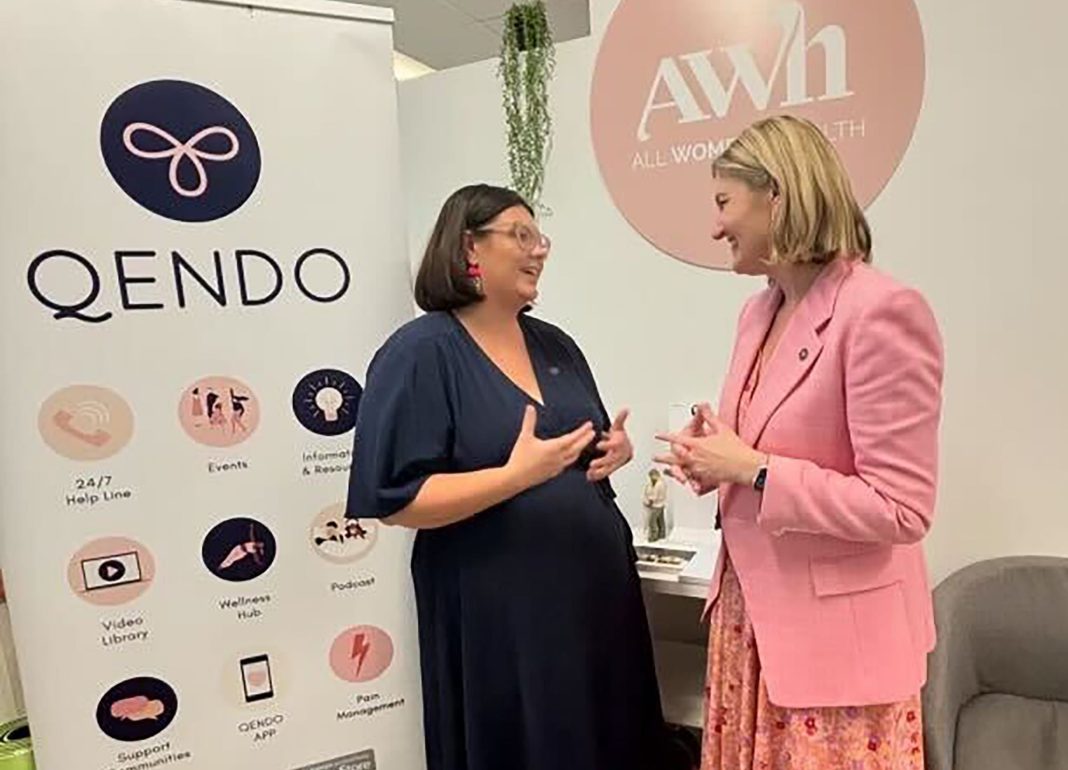Seven years and 11 general practitioners – that’s how long it took Jessica Taylor to receive an endometriosis diagnosis.
From the age of 14, Ms Taylor had excruciating periods to the extent she would faint at school and wake up in an ambulance on the way to hospital.
She saw 11 general practitioners over the years who would say the pain was normal and it was all in her head.
The pain and symptoms were so severe that Ms Taylor was unable to study during high school and prevented her from finishing university.
For years, no one could explain what was going on.
“It reaffirmed ‘maybe this is all in my head, maybe I’m not coping with life, maybe there’s something wrong with me’, I genuinely thought that,” Ms Taylor told AAP.
A GP suggested she should have her ovaries removed or try different contraceptive pills, which made her “loopy”.
Eventually, she saw a psychologist after thinking she was imagining the pain.
But a flare-up during the appointment finally showed someone Ms Taylor’s pain was real.
“She realised ‘Oh, wow, this is not in your head. There’s something really serious going on here’,” said Ms Taylor.
She looked at investigative surgery after her sister-in-law had a procedure for something called endometriosis.
“That was the first time I had ever heard the term,” said Ms Taylor who is now the chief executive of QENDO, a Queensland endometriosis education and lobbying organisation.
Endometriosis is a condition where tissue similar to the lining of the womb grows in other parts of the abdomen.
It is associated with pelvic pain, infertility and poor mental health.
Ms Taylor went to a new GP and asked for a referral to a gynaecologist for endometriosis.
Three weeks later she finally received her diagnosis.
These days she manages her pain with a pelvic physiotherapist while learning more about how her body works.
Ms Taylor says her story is not the only one.
About one in six women in Queensland is diagnosed with endometriosis by their early 40s, compared to just over one in seven Australia-wide, according to the latest Australian Institute of Health and Welfare data.
“Queenslanders are the most impacted by pelvic pain and we don’t have the services to help those people,” Ms Taylor said.
Professor Gita Mishra said the higher prevalence in Queensland may be due to more awareness in the state.
However, the founding director of the University of Queensland’s Australian Women and Girls’ Health Research Centre said it showed just how common endometriosis was.
On average, it takes seven years for Queensland women to receive an endometriosis diagnosis, which can only be formally confirmed through a laparoscopy – keyhole surgery of the abdomen.
However, the Queensland government hopes an $18.2 million funding boost will change all that.
The funding package is set to improve access to pelvic pain and endometriosis services, create peer support programs and provide scholarships to healthcare professionals to focus on the disease.
“This is absolutely critical for women and girls right across Queensland, who now feel like they have been heard, they’ve been listened to, their pain is now being believed,” Health Minister Shannon Fentiman said.
Prof Mishra said women need a “one-stop shop” so they can access all the information needed to decide on their health care.
Ms Taylor agrees dedicated clinics, where women could undergo surgery or access a more holistic service with pelvic floor and pain education, diet and physiotherapy, are needed.
“We need to re-shift the mindset and if you have suspected endometriosis you should have access to a pain specialist, a physiotherapist, and a dietician,” she added.
Education is paramount in the endometriosis battle.
Years ago, Ms Taylor used to book an appointment at a local GP and then spend 15 minutes educating the doctor on the disease.
“We have moved a little bit, but we’re still in the dark ages,” she said.
Endometriosis is also in the national spotlight, due to its high prevalence and a 24 per cent rise in hospitalisations to more than 40,000 in the 10 years to 2021/22, according to the institute data.
The Australian government announced $58.3 million in funding in the 2023/24 budget to establish 22 endometriosis and pelvic pain clinics across the country.
More recently, the Therapeutic Goods Administration approved Ryeqo as a treatment for moderate to severe endometriosis.
It’s the first new drug for the disease to come onto the market in more than a decade.
However, it will not be available on the Pharmaceutical Benefits Scheme until later in March, meaning it currently sets patients back about $135 a month.
Women spend an average of $30,000 a year on endometriosis care, Ms Taylor said, adding one woman told her she had to remortgage her home.
Ms Taylor hopes the Queensland government funding announcement is just the beginning.
“It’s the first significant investment, but it cannot be the last,” she said.
Prof Mishra said the funding announcement was significant because it finally showed women and their pain were no longer being dismissed.
“For women, it is important to feel like ‘okay something is being done here’- it is really an unmet need,” she said.
“It’s about time.”
By Savannah Meacham in Brisbane



